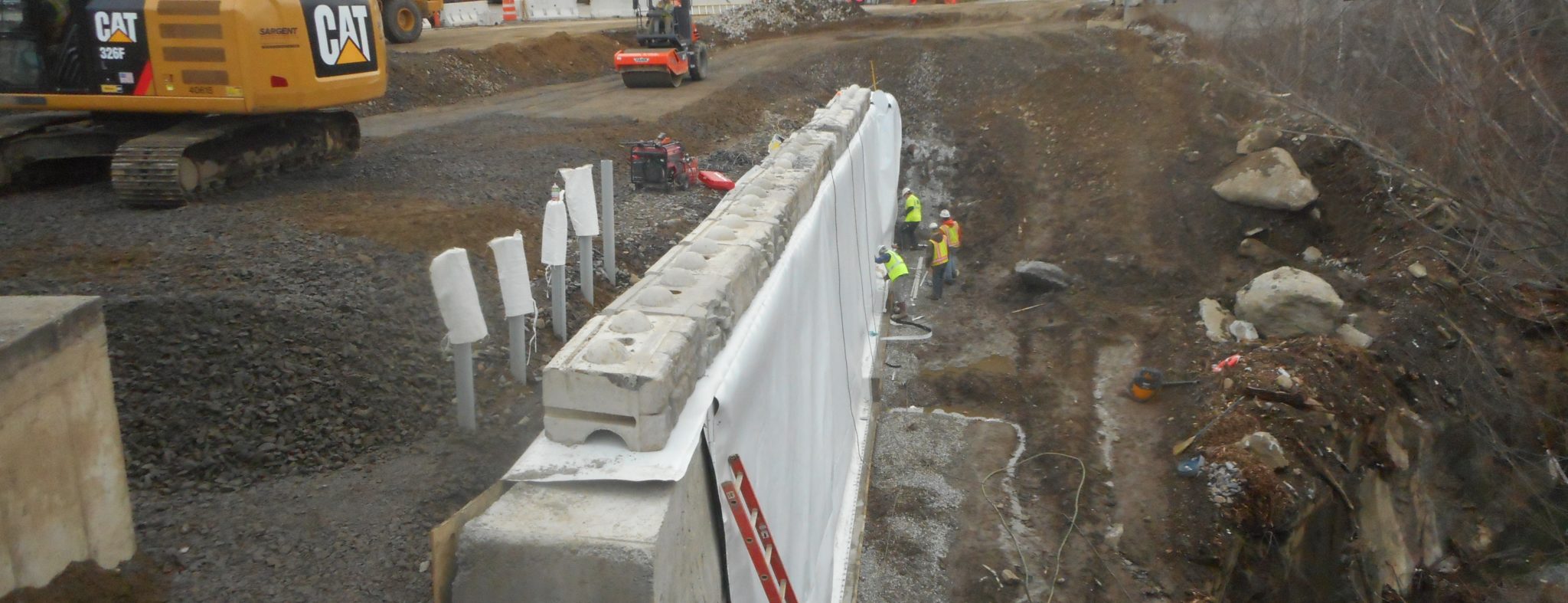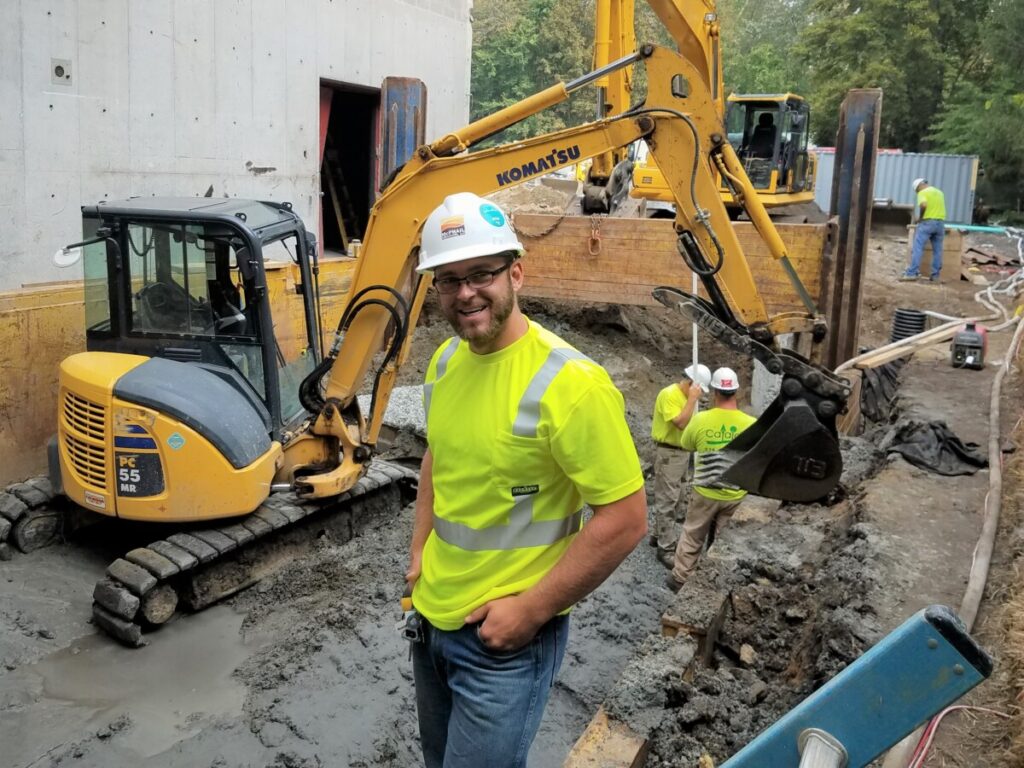Just How Geo Tech Engineers Can Address Common Soil Issues in Urban Advancement
Wiki Article
Checking Out the Innovative Methods and Technologies Shaping the Future of the Geotechnical Market for Sustainable Engineering Solutions
The geotechnical market is going through a transformative shift, driven by cutting-edge strategies and technologies that emphasize lasting engineering remedies. Advanced soil stablizing approaches, the use of smart materials, and the application of information analytics are redefining exactly how we approach facilities difficulties.Advanced Dirt Stabilization Techniques
Soil stabilization is a crucial process in geotechnical design, focused on boosting the physical residential properties of dirt to improve its load-bearing capability and resilience. Advanced soil stablizing methods play a pivotal function in resolving difficulties connected with unsteady or weak dirts, thus allowing safe and reliable construction practices.Amongst the famous methods, chemical stabilization includes the use of ingredients such as lime, concrete, or fly ash, which respond with dirt bits to develop a more natural mass. This technique is particularly efficient in boosting the stamina and dampness resistance of extensive clay soils. Mechanical stablizing, on the other hand, entails the physical alteration of soil residential or commercial properties through compaction or the consolidation of granular products, leading to boosted thickness and security.
Another cutting-edge approach is making use of geosynthetics, which provide support and minimize soil erosion while enhancing drainage. Techniques like dirt blending and deep dirt stablizing are additionally acquiring traction, enabling in-situ therapy of bothersome soils. Collectively, these sophisticated approaches not only boost the performance of dirt frameworks however also add to lasting design practices by minimizing the requirement for substantial excavation and product transport.
Smart Products in Geotechnics
Innovation is at the forefront of geotechnical design, particularly with the consolidation of clever materials that improve the efficiency and performance of dirt frameworks. Smart products, such as shape memory alloys, piezoelectric materials, and self-healing polymers, are revolutionizing the way engineers approach soil stablizing and facilities longevity (tailings engineer). These materials can adjust to transforming environmental problems, reply to stress, and even fix themselves, considerably enhancing the durability of geotechnical systemsFor instance, piezoelectric materials can generate electrical costs in feedback to mechanical tension, using potential for real-time surveillance of dirt problems and architectural honesty. Self-healing materials can autonomously fix fractures and damages, minimizing upkeep prices and expanding the life-span of geotechnical assets. The combination of these smart materials not only improves the mechanical buildings of soil but likewise adds to lasting engineering practices by reducing resource intake and environmental impact.
As the geotechnical sector continues to evolve, the adoption of wise materials will certainly play an important duty in establishing ingenious services, guaranteeing that frameworks are not just durable but likewise versatile to future obstacles. This transformative technique is poised to redefine the requirements of safety and security and efficiency in geotechnical design.
Information Analytics for Infrastructure
The integration of clever materials in geotechnical engineering has actually led the way for innovative methods, particularly in the world of data analytics for facilities. This innovative strategy leverages comprehensive data collection and analytical strategies to improve decision-making processes throughout the facilities lifecycle. By utilizing sensing units embedded in smart materials, engineers can continually check critical specifications such as dirt security, dampness levels, and structural stability.Data analytics allows the improvement of raw information into actionable insights, enabling predictive upkeep and boosted threat monitoring. Advanced formulas and artificial intelligence methods assist in the identification of patterns and anomalies, which can educate prompt treatments and maximize source allocation. Additionally, incorporating geographic info systems (GIS) enhances spatial analysis, further enriching the decision-making framework.
As infrastructure tasks grow in intricacy, the dependence on information analytics becomes progressively essential. It promotes a positive approach, reducing the chance of failings and ensuring the long life and sustainability of structures. By using the power of data analytics, the geotechnical sector is positioned to not only improve present practices but additionally leader ingenious solutions for future framework difficulties. This harmony of modern technology and design concepts will certainly specify the future of sustainable infrastructure development.

Sustainable Ground Renovation Approaches
Various sustainable ground enhancement techniques are becoming important options to deal with the obstacles of geotechnical design while decreasing ecological influence. These techniques not just boost soil efficiency yet also advertise environmental stewardship by decreasing reliance on conventional, more invasive techniques.
An additional cutting-edge technique is the application of geosynthetics, that includes naturally degradable materials that strengthen dirt while advertising drainage and disintegration control - tailings engineer. This decreases the demand for heavy equipment and decreases website disruption, therefore maintaining neighborhood environments
Additionally, methods such as vibrant compaction and vibro-replacement have actually progressed to include sustainable practices, integrating recycled materials and decreasing carbon footprints. These methods exemplify the sector's change towards more ecologically responsible solutions, making sure that ground renovation not just meets design needs yet likewise contributes positively to the surrounding environment.
Developments in Environmental Tracking
Over the last few years, developments in ecological tracking have substantially enhanced the capacity to evaluate and take care of geotechnical projects with very little ecological interruption. Ingenious innovations, such as remote picking up, Net of Things (IoT) gadgets, and real-time information analytics, are transforming exactly how environmental influences are measured and alleviated.Remote picking up innovations, consisting of satellite imagery and airborne LiDAR, assist in the fast evaluation of land usage changes and ecological conditions - tailings engineer. These devices enable continuous surveillance of websites, enabling engineers to determine potential concerns prior to they intensify. Additionally, IoT gadgets, equipped with sensing units for parameters like soil dampness, temperature level, and gas discharges, offer live information streams that boost the understanding of site-specific environmental variables
Real-time data analytics better fine-tune decision-making processes by incorporating data from various resources, permitting for aggressive monitoring techniques. This holistic method not just ensures conformity with environmental laws but also promotes lasting techniques within the geotechnical industry.
As these developments continue to develop, they hold the prospective to link the space in between engineering goals and environmental stewardship, promoting a more lasting future for geotechnical projects worldwide.
Verdict
To conclude, the geotechnical industry is undertaking a transformative development driven by innovative techniques and innovations that focus on sustainability. Advanced soil stablizing methods, the integration of wise products, and the application of data analytics collectively improve the strength and effectiveness of infrastructure. Lasting ground enhancement techniques and advancements in environmental tracking emphasize the sector's commitment to eco-friendly stewardship. These advancements not only address contemporary design obstacles yet also lead the way for a more lasting future in geotechnical techniques.Techniques like dirt mixing and deep dirt stabilization are likewise acquiring traction, enabling for in-situ treatment of troublesome dirts. Jointly, these innovative methods not only improve the performance of soil structures but also contribute to sustainable design methods by reducing the need for considerable excavation and product transport.

Report this wiki page